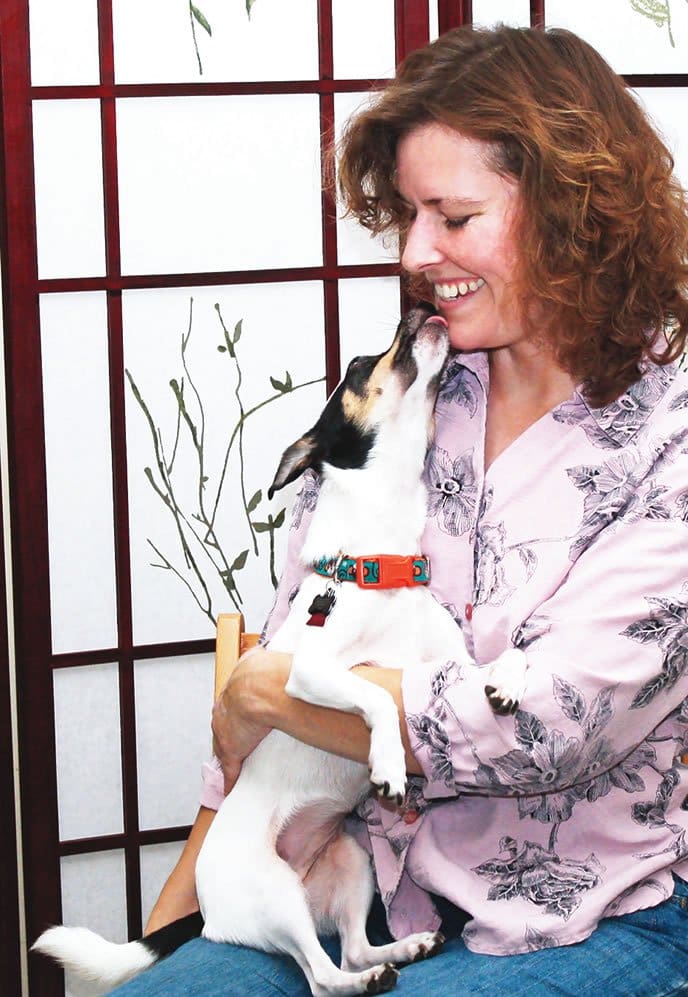
Marnie Montgomery,
CPDT-KA, PMCT
I will occasionally use a bowl, but increasingly my dogs’ meals are experiences! One option is a kibble-dispensing ball for each dog, with a closed baby-gate between them to prevent my Cocker Spaniel from stealing the Shepherd-mix’s ball when she’s done with hers.
Joyful Dog, LLC, Leesburg, VA
(703) 554-2384
Tiffany Lovell,
CPDT-KA
I use the Kyjen Slow Bowls. I love that these bowls make mealtime more interesting for my dogs. They have to work at it and problem solve which engages their brain. Also, I have a multidog household with dogs of various ages. Because my much older dogs take longer to finish their meals, the younger ones would begin to approach and hover while they ate. I found that these bowls slow down my younger dogs enough to allow everyone to finish their meal at about the same time. It’s great!
Cold Nose College Space Coast
(321) 757-2059
Christine Michaud
I use a combination of things, but my dogs’ all-time favorite is hiding the food in little piles around our yard and sending them off to “go find it.” I love this too, as it builds a strong sit/stay while I hide the food, and it keeps them busy for 30 minutes. The piles are in different places every day so they really have to look or, should I say, sniff!
Family Dog Training, LLC, Fairfax Station, VA
(703) 595-8028

Shannon Bayless, KPA CTP
Several dogs have spent their entire fostering time with me without ever receiving a meal from a bowl! Instead, I used Doggie Zen practice—feeding them by hand for impulse control and building a good working relationship—or gave them kibble from a Wobbler or puzzle for building their confidence. Careful, incremental introduction of the Wobbler is fabulous for dogs whose history has promoted learned helplessness. Watching those dogs learn that they can use their bodies to get their own food is a joy. When they master it and have fun knocking it all around the room under their own power, that practice informs the rest of their activities. I whisper, “You can do it!” as they’re learning. Pretty soon, they know “I can do it!”
One of my current foster dogs is semi-feral; she can live in a house but wants nothing to do with humans (yet!). Every bite of her ground raw meat meal is offered from my hand as I sit at her level on the floor. Sometimes it is quite messy for me, but it’s worth it to gain, over the course of months, her looser body language, her more relaxed eye contact, her bunny-hopping anticipation, her closer proximity with more duration, and, most of all, her trust and happiness.
Meal motivation can’t be passed up for training opportunities, so I also use hand-feeding to teach her name, a wait (not a precise wait, but one she can handle), and a cue for going into the room where she is fed.
In Tune Dogs, Bogart, GA
(706) 296-6893
Barbara Dobbins
Tricky Treat Balls by Omega Paws are the best thing since sliced bread. Or should I say “oranges” because that is what they are called in my house. These food-dispensing balls look just like giant oranges, with dimples, even. They come in three sizes: small (2.5-inch diameter), medium (3.5-inch), and large (5-inch). Pour appropriately sized food or treats and let your dog figure out how to get the food to dispense. Filling the ball more completely tends to make it easier for the treats to begin being disbursed.
Every dog will have his or her own unique way of approaching the task; my Border Collie Duncan used to pick his up and throw it down onto the ground, while his littermate Daisy would quickly push her around with her nose until it was empty and then politely borrow Duncan’s. Cody, my sister’s Beagle, would simply bring the ball to her and ask her to shake the treats out! These also provide low-impact exercise, which is great for all dogs, but especially for senior or physically compromised dogs. You will get exercise, too, from searching for lost or stuck “oranges.”
Two Dog Girl, San Francisco Bay Area
(925) 890-7986; barb@twodoggirl.com






